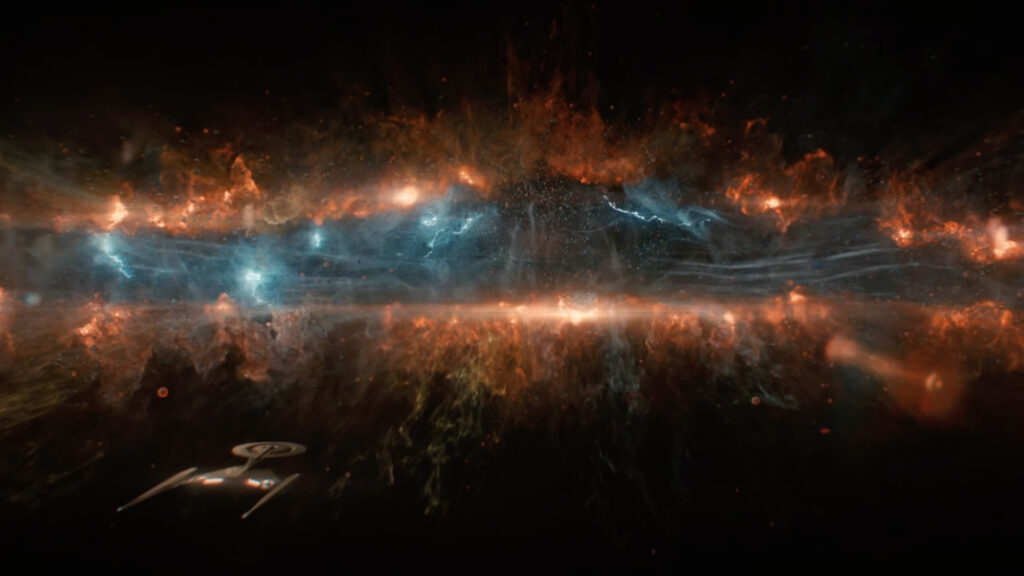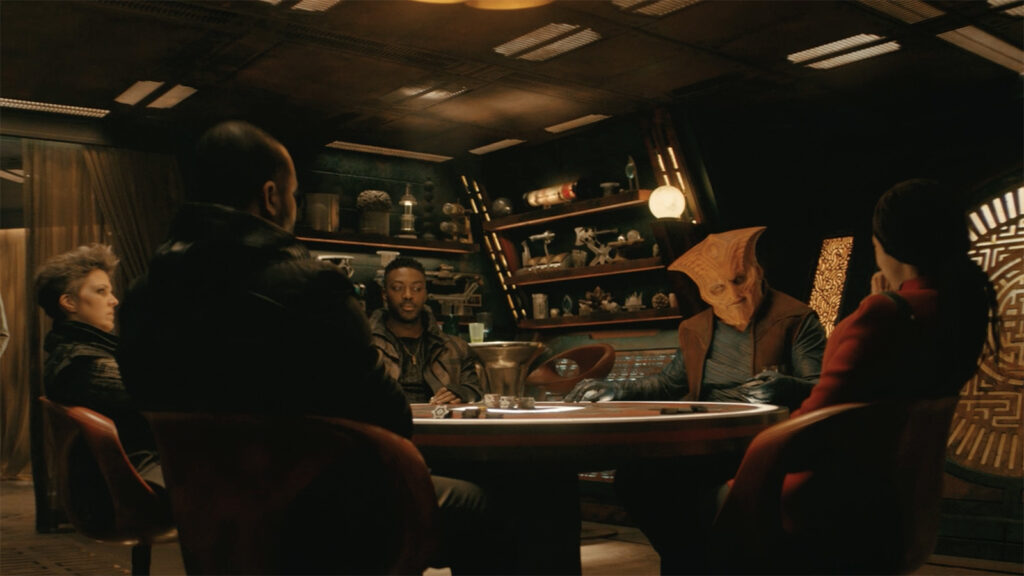SPOILERS ARE THE UNIVERSAL LANGUAGE!
I was originally going to title this blog “Close Encounters of the 10-C Kind,” but I felt it more appropriate to share my mix of reactions in the same way that Species 10-C communicated in ratios of their pheromone emotions. And if you don’t know WTF I’m talking about, then you haven’t watched the penultimate episode of STAR TREK: DISCOVERY‘s fourth season, “Species 10-C.”
This episode was a true conundrum for me when it came time to try to think of how I felt about it. On the one hand: GREAT EPISODE! On the other hand: DREADFUL EPISODE!
You see my problem?
LET’S START WITH INTRIGUING
One of the most far-fetched aspects of Star Trek over the decades is just how convenient first contacts tend to be. Throughout the first four TV series, it seemed that, no matter where you traveled in the galaxy, everybody looked mostly human (just maybe a strange forehead or ears here and there), and they all either spoke colloquial English immediately or else could learn it quickly or have it universally translated. And it kinda spoiled us fans, didn’t it? Of course, without such tropes, we’d have to spend the majority of each episode just figuring out how to communicate, and that would leave little time to tell compelling sci-fi stories.
Granted, Star Trek did have a few episodes that focused on communicating when the universal translator wasn’t up to the task. Most notably, the excellent Next Generation episode “Darmok” devoted the entire storyline to Picard and the Tamarian captain trying to find a way to understand each other because the languages were just too different for the universal translator to figure out.
Unfortunately, if you think too hard, even a wonderful episode like “Darmok” collapses under the weight of strained credulity. Obviously the Children of Tama were able to communicate beyond simple metaphors. After all, how can you build a starship without saying something like, “Pass me that #3 hexagonal hyper-spanner…”? And in order to say, “Uzani, his army with fists closed,” you have to know the words “army,” “fists,” and “closed.” In other words, the universal translator should have been able to do better than it did.
But hey, it still made for a great episode dedicated to bridging a language barrier. And so it was for “Species 10-C.” It was fascinating watching the methodical process of trying to bridge such vastly different methods of communication. But again, you kind of have to turn off your brain to accept how far-fetched the concept is…
Continue reading “DISCOVERY’s “Species 10-C” episode was 37% intriguing, 45% annoying, and 18% frustrating… (editorial review)”












